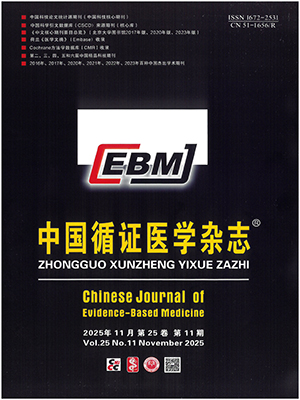Objective To systematic review of bladder cancer antigen (BTA) stat and urine cytology (UC) in the diagnosis of bladder cancer.
Methods MEDLINE (Jan.1966 to June 2008), EMbase (Jan.1988 to June,2008), Cochrane Library (Issue 1,2008), CMCC (1979 to June, 2008) and CNKI (Jan.1979 to June, 2008) were searched for studies about BTA stat and cytology in the diagnosis of bladder cancer. The search strategy was made according to the Collaborative Review Group search strategy. Quality of included trials wa assessed by quality assessment of diagnostic accuracy studies.Data were extracted by two reviewers using the designed extraction form. The software MetaDiSc1.4 was used to review management and data analysis.
Results In total, 71 relevant studies were searched, of which 13 were included and 58 were excluded, with 3 733 patients involved. Heterogeneity (except for threshold effect) was found within these studies. A meta-analysis was performed using random effect model. Pooled accuracy indicators of sensitivity, specificity, positive likelihood ratio (LR) , negative LR and diagnostic odds ratio (dOR) and 95%CI of BTA stat and UC were 0.68 (0.65,0.70), 0.74 (0.72, 0.76), 2.51 (2.04, 3.09), 0.46 (0.38, 0.55), 5.66 (3.87, 8.29) and 0.41 (0.39, 0.44), 0.97 (0.97, 0.98), 12.64 (7.58, 21.08), 0.62 (0.55, 0.71), 22.16 (12.38, 39.66), respectively. The sensitivity of both methods increased as the higher of tumor grade and stage, and the incipient tumor was higher than the recurrence. Area under curve (AUC) of SROC curve of BTA stat and UC were 0.753 5 and 0.711 9, and Q index were 0.696 3 and 0.662 4, respectively.
Conclusions The performance of urine BTA stat is moderate in the diagnosis of bladder tumor. It can not replace the traditional urine cytology and diagnose the bladder cancer alone, but which can be an available noninvasive examination and an important adjunct of preoperative detecting and postoperative monitoring of bladder tumor.
Citation: YANG Minggen,ZHAO Xiaokun,WU Zhiping,HOU Yi. Bladder Cancer Antigen BTA stat and Urine Cytology in Bladder Cancer Diagnosis: A Meta-analysis. Chinese Journal of Evidence-Based Medicine, 2009, 09(4): 458-464. doi: 10.7507/1672-2531.20090085 Copy
Copyright ? the editorial department of Chinese Journal of Evidence-Based Medicine of West China Medical Publisher. All rights reserved
-
Previous Article
Fat Emulsion for Acute Pancreatitis: A Systematic Review -
Next Article
Adjuvant Radiotherapy for Endometrial Cancer: A Systematic Review




